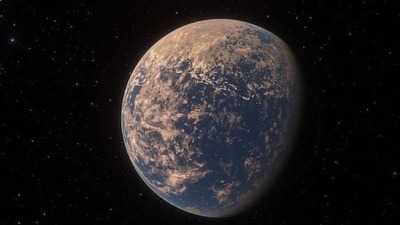
This planet 41 light-years away might be suitable for life
10 Sep 2025
NASA's James Webb Space Telescope (JWST) has spotted a planet 41 light-years away that could have an atmosphere.
The planet lies in the "habitable zone," where conditions are just right for liquid water to exist on a rocky surface.
If confirmed, this would be the first time a rocky, habitable zone planet is known to have an atmosphere.
Trappist-1e is 1 of 3 planets in habitable zone
Planet profile
The planet, dubbed Trappist-1e, is one of seven rocky worlds orbiting a small red dwarf star called Trappist-1.
The system has been the focus of intense study since its discovery in 2016.
Three of these planets, Trappist-1d, e, and f are located in the habitable zone where conditions could be suitable for life as we know it.
JWST has been searching for atmospheres since 2022
Research process
Since 2022, JWST has been systematically searching for atmospheres around the Trappist-1 planets.
The first three innermost planets were found to be mostly bare rocks with thin atmospheres.
However, the outer planets, including Trappist-1e in the middle of its star's habitable zone, could still have atmospheres.
Observations of this planet were conducted four times between June and October last year.
Trappist-1e could have nitrogen-rich atmosphere
Data difficulties
The team faced challenges with "stellar contamination," or interference from active regions on Trappist-1, during their observations.
This made it hard to separate the star's signal from that of the planet.
Despite these hurdles, they were able to identify two potential scenarios for Trappist-1e: it could either have a secondary atmosphere rich in nitrogen and methane or be a bare rock without an atmosphere.
More observations needed to confirm atmospheric status
Next steps
To determine if Trappist-1e is habitable, scientists will need to measure the levels of greenhouse gasses like carbon dioxide and methane.
The current data is a step toward that goal, but more JWST observations are needed to confirm the planet's atmospheric status and gas concentrations.
An additional 15 transits of this planet are currently being observed and should be completed by late 2025.